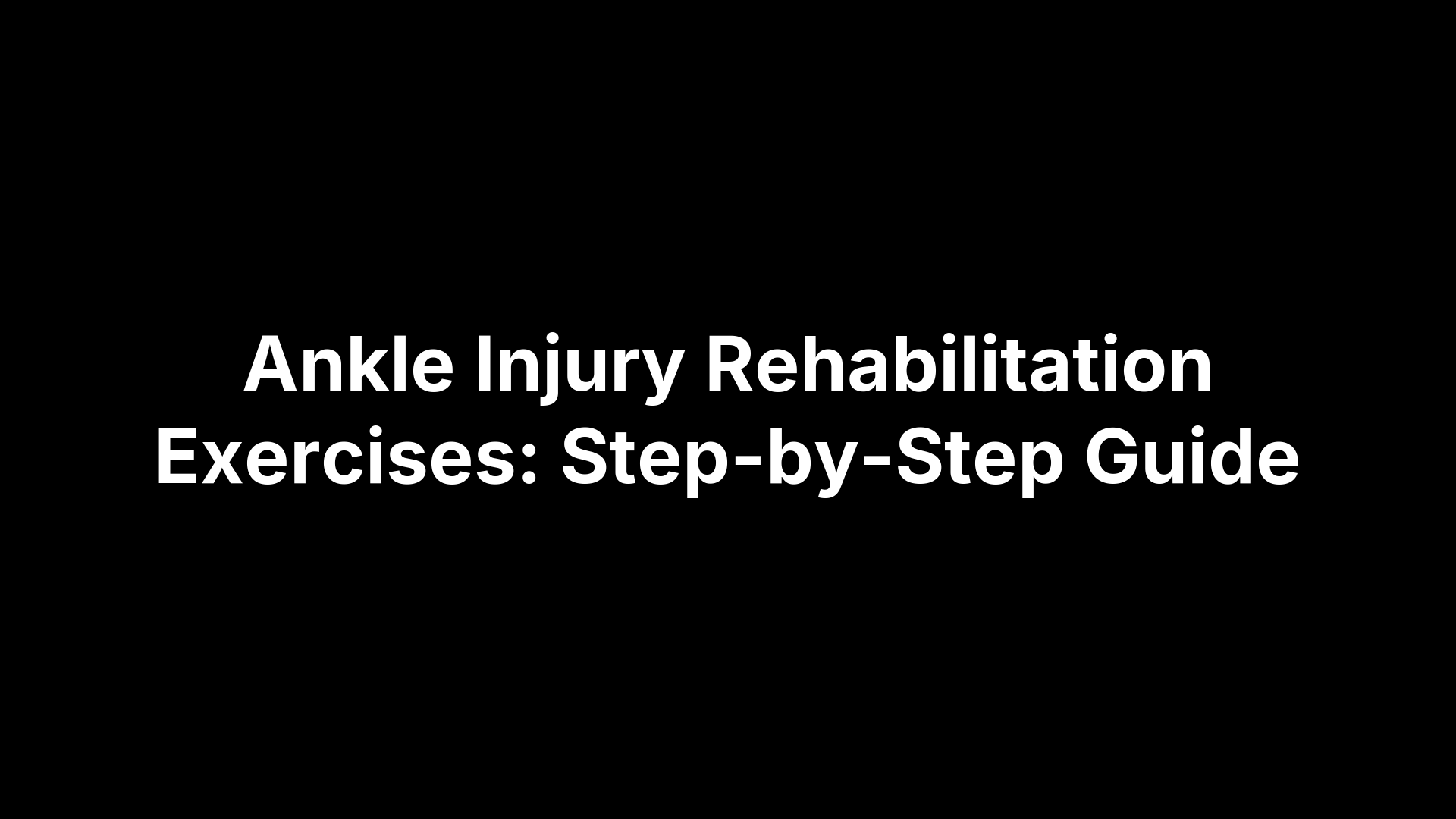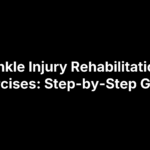Foot pain can hijack your day fast — the first steps out of bed feel like a jab in the heel, your arches ache after a shift, or tight calves tug on your ankles during a run. Whether it’s plantar fasciitis, general heel soreness, or fatigue through the arch, the right movements can ease pain, restore mobility, and help keep you active without flaring things up.
This guide walks you through five proven, at-home exercises for foot pain relief — no gym required. For each move, you’ll learn what it targets and why it helps, clear step-by-step instructions, how many sets and reps to do, simple ways to make it easier or more challenging, and key safety tips. Set aside 10 minutes, grab a wall, a chair, and a tennis ball or frozen water bottle, and you’re ready to go. Let’s start with a seated plantar fascia stretch to calm stubborn morning heel pain.
1. Plantar fascia stretch (seated toe pull)
When morning steps sting your heel or your arch feels tight, this simple seated stretch is a fast, reliable reset. It’s one of the most effective exercises for foot pain from plantar fasciitis because it directly targets the tissue that’s flaring.
What it targets and why it helps
The plantar fascia runs from your heel to your toes. Gentle toe extension lengthens this band and eases tension where it attaches to the heel, reducing that sharp “first-step” pain and improving flexibility for the rest of your day.
Step-by-step instructions
Start seated in a chair with good posture. You should feel a comfortable, not sharp, stretch.
- Cross your affected foot over the opposite knee.
- With one hand stabilizing your heel, use the other to pull your toes back toward your shin.
- Aim to feel a stretch along the arch toward the heel.
- Hold, breathe, then slowly release and repeat.
- Option: If reaching is difficult, loop a towel around the ball of your foot and gently pull the toes back.
Sets, reps, and frequency
Build consistency over intensity.
- Hold: 15–20 seconds
- Reps: 3 per foot
- Frequency: 2–3 times per day; especially before your first steps and after activity
Make it easier or harder
Adjust based on symptoms.
- Easier: Pull only the big toe; use a towel for leverage and finer control.
- Harder: Add a slight ankle dorsiflexion (pull the foot up) while maintaining the toe pull; hold toward the upper end of your comfortable range.
Safety notes and form tips
- Keep the stretch in the arch/heel; avoid pain sharper than a 5/10 or any tingling/numbness.
- Don’t bounce. Ease in, hold steady, and release slowly.
- If you have diabetes or reduced sensation, stretch gently and check your skin after.
2. Wall calf stretch (straight- and bent-knee)
Tight calves can tug on your Achilles tendon and plantar fascia, amplifying heel and arch pain with every step. This two-part wall stretch releases both major calf muscles—the gastrocnemius and soleus—improving ankle mobility and reducing strain on the heel so walking and running feel smoother.
What it targets and why it helps
The straight-knee version targets the gastrocnemius (upper calf). The bent-knee version shifts the stretch lower into the soleus and Achilles. Loosening both reduces pull on the heel and arch, a key driver in plantar fasciitis and general heel soreness.
Step-by-step instructions
Set up facing a wall with hands at shoulder height.
- Place the painful side behind you; toes of both feet point straight ahead.
- Straight-knee: Keep the back knee straight, front knee bent. Press the back heel down and lean hips toward the wall until you feel an upper-calf stretch. Breathe and hold.
- Bent-knee: Bring the back foot a bit closer. Slightly bend both knees and gently drive the front knee toward the wall while keeping the back heel down. You’ll feel this lower in the calf/Achilles.
- Keep hips square, chest tall, and heels grounded throughout. Switch sides.
Sets, reps, and frequency
- Hold: 20–30 seconds each position (straight- and bent-knee)
- Sets: 2–3 per leg per position
- Frequency: 2–3 times daily; especially before first steps and after activity
Make it easier or harder
- Easier: Shorten your stance; reduce the lean; support more weight through your hands.
- Harder: Lengthen your stance; add a slight forward lean; perform on a gentle incline (slant board) while keeping heels down.
Safety notes and form tips
- Keep the back heel flat; don’t let the foot turn out or the arch collapse.
- Aim for a comfortable stretch (≤5/10 on a pain scale); no bouncing.
- For sensitive Achilles, start with the bent-knee version and lighter pressure.
- Do not lock the back knee; keep it straight but soft during the first stretch.
3. Short-foot activation (toe spread and press)
If your arches feel sleepy or your forefoot cramps, this quick activation drill teaches your toes and intrinsic foot muscles to support the arch. It pairs perfectly with the stretches above and is one of the most useful exercises for foot pain from plantar fasciitis and forefoot overload.
What it targets and why it helps
Short-foot work strengthens the arch’s small stabilizers and improves big-toe control for a stronger push-off. Better toe splay plus a firm big-toe press reduces strain on the plantar fascia and helps calm heel and arch pain during walking and running.
Step-by-step instructions
Start tall with feet hip-width and weight evenly distributed.
- Lift all toes and spread them as wide as possible. Hold until lightly fatigued.
- Lower the toes to the floor, keeping them spread.
- Press the ball of your big toe down without letting any part of your foot lift or your arch collapse.
- Relax and repeat smooth, controlled reps.
- Tip: Do this near a counter for light balance support if needed.
Sets, reps, and frequency
- Reps: 10 smooth reps per foot
- Sessions: 3 times per week (great after a walk or run)
Make it easier or harder
- Easier: Perform seated to reduce balance demands; focus only on spreading the toes at first.
- Harder: Maintain the big-toe press while gently shifting weight forward; progress to single-leg stance when pain allows.
Safety notes and form tips
- Keep toes long (don’t claw), arch gently lifted, and heel grounded.
- Toes and knees point straight ahead; avoid rolling the ankle in.
- Stretch sensation is okay, sharp pain isn’t—stay ≤5/10 on a pain scale.
4. Standing heel raises (double- to single-leg progressions)
Strong calves and a resilient Achilles reduce load on the plantar fascia and improve push-off with every step. Heel raises are simple, scalable exercises for foot pain that build strength where it matters and can quickly highlight side-to-side differences.
What it targets and why it helps
This move strengthens the gastrocnemius and soleus (calf) and conditions the Achilles tendon. Driving through the ball of the big toe also supports the arch, which can lessen heel and forefoot pain during walking and running.
Step-by-step instructions
Stand near a counter or chair for light support.
- Place feet hip-width apart, toes pointing straight ahead.
- Rise onto the balls of both feet, finishing by lifting through the big toe.
- Pause briefly at the top.
- Slowly lower your heels to the floor with control.
- Repeat. When this is easy and pain allows, perform on one leg.
Sets, reps, and frequency
- Begin: 2 sets of 10–12 reps
- Build: 3 sets of 12–15 reps (optionally up to 20)
- Frequency: 3–5 days per week; great before activity
Make it easier or harder
- Easier: Hold more weight on your hands; reduce the height of the lift; do seated heel raises first.
- Harder: Progress to single-leg; add a slow 3–4 second lower; wear a backpack for load; perform a bent-knee set to bias the soleus.
Safety notes and form tips
- Keep ankles from rolling in; track heels straight over the second toe.
- Move smoothly—no bouncing; keep the ball of the big toe grounded.
- Aim for a tolerable stretch or effort (≤5/10 pain). Stop if you feel sharp Achilles pain or calf cramping that doesn’t ease with rest.
5. Foot rolling massage (tennis ball or frozen water bottle)
When your heels feel hot and achy or your arches are stiff, a quick rolling massage can melt tension fast. It’s a simple add-on to the other exercises for foot pain and pairs especially well after standing, walking, or a workout.
What it targets and why it helps
Rolling mobilizes the plantar fascia and small foot muscles, improves blood flow, and eases trigger points through the arch. Using a chilled bottle adds soothing cold that can calm irritation after activity.
Step-by-step instructions
Start seated to control pressure.
- Place a tennis ball (or frozen water bottle wrapped in a thin towel) under your arch.
- Slowly roll from heel to ball of foot, staying on the soft arch.
- Sweep side-to-side across the arch; pause 5 seconds on tender-but-tolerable spots.
- Adjust pressure by leaning more or less through the foot. Switch sides.
Sets, reps, and frequency
- Time: 2–3 minutes per foot (room-temp ball); 5–10 minutes max with a frozen bottle.
- Frequency: 1–2 times daily, especially after long standing or runs.
Make it easier or harder
- Easier: Wear socks or use a softer ball; keep most weight on the opposite leg.
- Harder: Stand to add pressure or use a firmer ball (e.g., lacrosse).
Safety notes and form tips
- Stay ≤5/10 on the pain scale; avoid sharp, zinging pain or numbness.
- Roll the arch, not directly on the heel bone or toes.
- Wrap cold bottles; protect skin and limit cold exposure as noted.
- If you have diabetes or reduced sensation, use gentle pressure and avoid prolonged cold unless cleared by your clinician.
Next steps for your feet
These five moves work best as a quick, consistent routine. Aim for 10 minutes a day, use the stretches before first steps and after activity, and keep effort under a “5 out of 10” on the pain scale. If anything spikes sharply, back off, and pair the routine with supportive shoes and a gradual return to activity.
If your foot pain lingers beyond 4–6 weeks, wakes you at night, or comes with swelling, numbness, or a recent injury—or if you live with diabetes—get checked by a foot and ankle specialist. We offer conservative care, custom orthotics, advanced imaging, and same-day appointments across multiple Central Virginia locations. Schedule an evaluation with Achilles Foot and Ankle Center and get a plan tailored to your feet.






